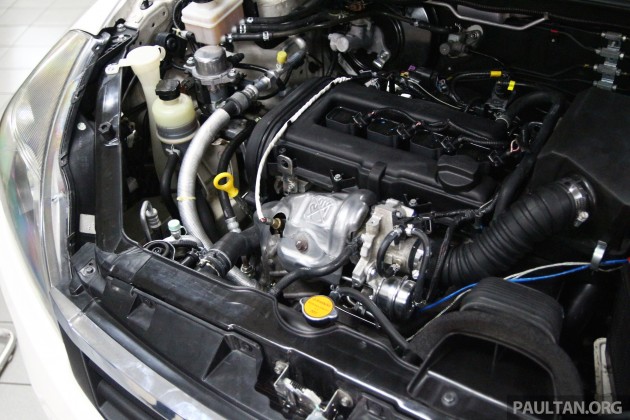In an exclusive interview with paultan.org, Proton chief technical officer Abdul Rashid Musa has shared some key details regarding the national carmaker’s highly-anticipated new engine family – announced earlier this month – which will utilise direct injection and will be offered in both naturally-aspirated (GDI) and turbocharged (TGDI) variants.
Firstly, the development of the new engines were driven by regulatory and market requirements, as Proton wants to be a competitive global player – and with the European market now requiring all new cars to meet the stringent Euro 6 emissions standards, the company needs the new mills (which are designed to meet Euro 6c regulations coming into effect in 2018) if it ever wants to return to the lucrative Continental market.
Rashid said that Proton needs to change and upgrade its capabilities to be more competitive. He admitted that the company was late in introducing variable valve timing (VVT) technology – which only came onto the market with the Iriz at the tail end of 2014 – but added that the company is catching up to established players.
As was revealed during the official announcement, the new engines are modular, with commonalities both in design and the components used. The 1.3 litre and 1.5 litre GDI and TGDI engines are four-cylinder engines, sharing an identical bore but differing stroke measurements; the 1.0 litre and 1.2 litre VVT engines are three-cylinder versions of those four-pot mills.
The engines feature a higher compression ratio of 12:1 on GDI engines and 10.5:1 on the TGDI engines – these compare favourably to 10:1 on the Iriz’s VVT engines and 8.9:1 on the 1.6 litre CamPro CFE/Turbo engine. Also incorporated is a split engine cooling system that enables the cylinder head and block at different temperatures for optimised efficiency. On TGDI engines, a single-scroll turbocharger is used, with the most powerful 1.5 litre TGDI projected to be capable of producing 180 hp and 250 Nm.
Elsewhere, the fuel injectors on the GDI and TGDI engines are capable of spraying fuel at 200 bars of pressure, compared to just 2-3 bars in a standard port injection system. The technology used on the new GDI engines are based on the patents obtained from Petronas when it acquired the oil giant’s engine technology in 2012, some of which are shared with development partner Ricardo.
The engines are also designed to be future-proof, with features like cylinder deactivation (using a collapsible roller finger follower), mild hybrid operation (through the use of a belt starter-generator), a Miller cycle and spray-guided direct fuel injection able to be added on.
The workings of a Miller cycle engine would require a separate article to be explained fully – but essentially, in such an engine, the intake valve is left opened for part of the compression stroke, which pushes some of the air/fuel mixture back into the intake port. This reduces the effort required to compress the remaining mixture, aiding efficiency.
On the other hand, spray-guided direct injection, which uses injectors mounted at the top of the combustion chamber to spray fuel downwards – rather than from the side against a walled chamber in the piston in traditional systems – results in improved fuel efficiency. The aim, according to Rashid, is for the engines to eventually achieve a thermal efficiency of almost 40% – the same as on the newest hybrids like the Toyota Prius and Hyundai Ioniq.
Rashid said that while Proton isn’t a technology leader, it wants to bring these technologies down towards a more affordable level – as it has done in terms of safety. “The technologies aren’t cheap, but we are contributing significantly in making them more affordable,” he said.
The post Proton new GDI and TGDI engines detailed – modular design, higher compression ratio, future-proofed appeared first on Paul Tan's Automotive News.






